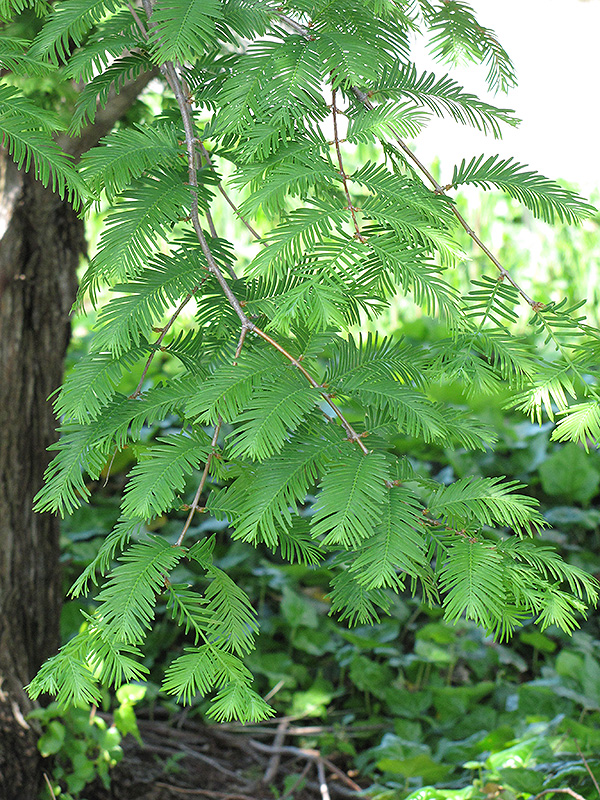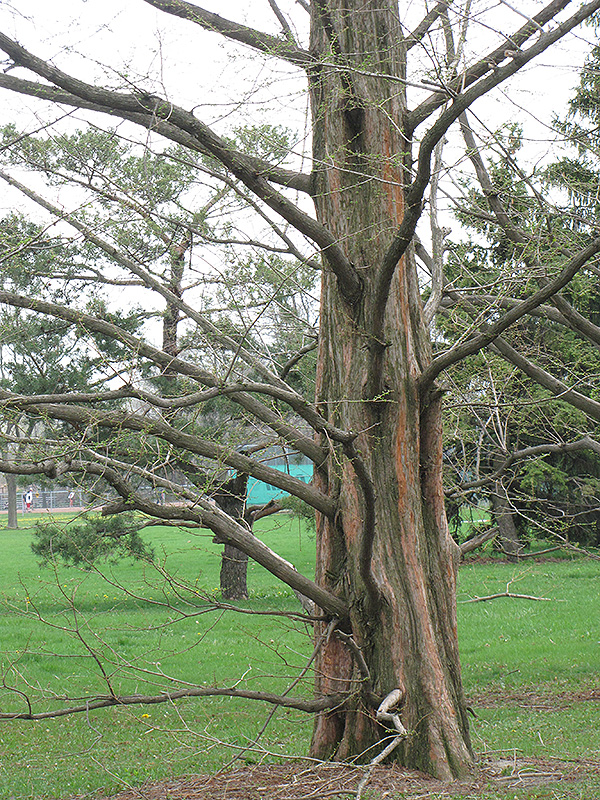>> Home
Height: 90 feet
Spread: 25 feet
Sunlight:
![]()
Hardiness Zone: 6
Description:
An ancient and interesting deciduous conifer with a very delicate, ferny appearance, and a very tall, pyramidal habit of growth; shaggy, reddish bark is rather appealing, beautiful apricot brown fall color; the hardiest of the redwood/sequoia family
Ornamental Features
Dawn Redwood is primarily valued in the landscape for its distinctively pyramidal habit of growth. It has emerald green deciduous foliage. The ferny bipinnately compound leaves turn an outstanding coppery-bronze in the fall. The peeling antique red bark adds an interesting dimension to the landscape.
Landscape Attributes
Dawn Redwood is an open deciduous tree with a strong central leader and a distinctive and refined pyramidal form. It lends an extremely fine and delicate texture to the landscape composition which can make it a great accent feature on this basis alone.
This is a relatively low maintenance tree, and is best pruned in late winter once the threat of extreme cold has passed. Deer don't particularly care for this plant and will usually leave it alone in favor of tastier treats. It has no significant negative characteristics.
Dawn Redwood is recommended for the following landscape applications;
- Shade
- Vertical Accent
Planting & Growing
Dawn Redwood will grow to be about 90 feet tall at maturity, with a spread of 25 feet. It has a low canopy with a typical clearance of 4 feet from the ground, and should not be planted underneath power lines. It grows at a fast rate, and under ideal conditions can be expected to live to a ripe old age of 100 years or more; think of this as a heritage tree for future generations!
This tree should only be grown in full sunlight. It is quite adaptable, prefering to grow in average to wet conditions, and will even tolerate some standing water. It is not particular as to soil type or pH. It is somewhat tolerant of urban pollution. Consider applying a thick mulch around the root zone in winter to protect it in exposed locations or colder microclimates. This species is not originally from North America.


